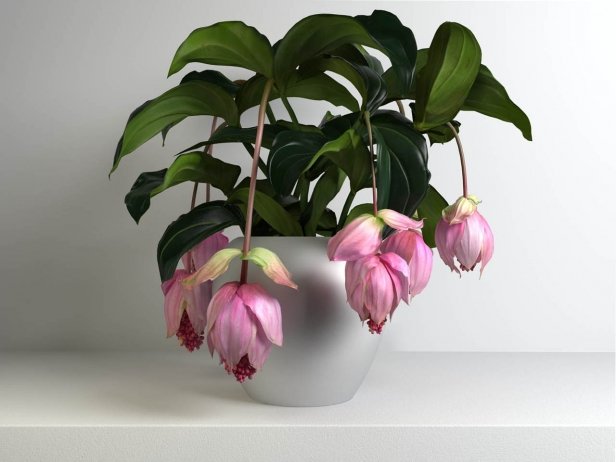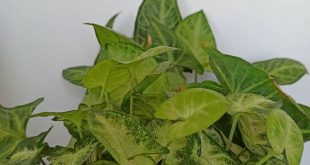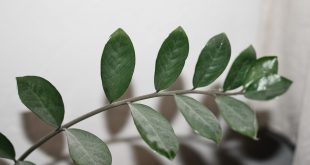
Medinilla magnifica, also called the pink lantern plant, rose grapes, Philippines orchid, is a beautiful, showy plant. They are famous due to their broadleaf with flowers hanging down, which gives an awesome look like an indoor plant. The following are the facts about Medinilla magnifica:
Medinilla magnifica a flowering species belongs to the family Melastomaceae. It is an epiphytic species that lives on other large plants or trees but does not harm the trees. It increases the beauty of that site by their hanging flowers. (Source)
There are about 375 species of Medinilla all over the world from which the Philippines has about 80 species. All have a medium size and live in their host trees. Some of them are Medinilla myriantha, Medinilla speciosa, Medinilla scortechinii, etc. (Source)
Medinilla magnifica is commonly found in a native area like the Philippines, Java, Sumatra, Malay Peninsula. This plant reaches the height of 3 to 4 feet tall and spreads to about 1 to 3 feet. You can also keep your plant indoors if it is your desire shaped by pruning.
Medinilla magnifica has a flower consisting of many small flowers. The flowers’ pinnacle hangs down as clusters of grapes. The flower’s color is pink or purple that gives beautiful foliage. The flowers have shiny or showy bracts at the base of the flowers that resemble petals of flowers.
Medinilla magnifica needs bright, indirect light and prefers shaded areas. Keep away from direct sunlight because it damages the leaves and turns them brown. To avoid the browning of leaves, set their position in a shady area as this plant lives on trees and does not receive direct sunlight.
Medinilla magnifica likes peat moss, orchid bark, compost, mix soil. The soil must be well-draining and holding moisture. This plant needs slightly acidic soil about 6.1 to 6.5 for better growth. You can maintain acidity by giving them little acidifying fertilizer.
Medinilla magnifica needs moist soil throughout the year. Water well to keep the soil healthy and also allow the top 1 to 2-inch soil to dry out. Do not make the soil too soggy, only keep moisture. Water more during summer or spring and reduce watering during winter.
Medinilla magnifica needs a warm temperature throughout the year. The ideal temperature for Medinilla is 70 to 75 degrees during summer and 57 to 65 during winter. Don’t drop the temperature below 50 degrees, it causes the yellowing of leaves.
Medinilla magnifica prefers high humidity, about 60 to 70%. Below 60% humidity, the plant can wilt or dry. During winter when the plant faces a dry climate, place the humidifier near the plant to maintain humidity. Also, use a tray filled with pebbles or water behind the pot.
Fertilize the Medinilla magnifica once every two weeks at the onset of new shoots. This plant needs fertilizer during growing seasons but avoids fertilizer when the plant blooms. Used a houseplant liquid fertilizer like orchid fertilizer, which also helps to maintain the pH of the soil. (Source)
Prune the Medinilla properly at regular intervals of time. Cut the leaves which no longer support the plant or become yellow. Remove bulky shoots and prune to maintain the size of the plant. (Source)
There are two methods of propagation, one from seed and the other from cutting a plant shoot. Cut the stem with two leaves and potted it in a new pot. Water them properly and add rooting hormones to develop roots.
The second method is seed germination. Crush the fruit because it contains many seeds in its gel. Wash the seed and then soak it in water. Change the water for a few days until the roots emerge from the stem. When the roots emerge, they pot into newly potting soil. (Source)
Medinilla magnifica is not toxic to humans and pets if not ingested. If your pest ate it in a large quantity, it can cause vomiting, mouth swallowing. So, prevent your pets from eating it.
The common problem faced by Medinilla magnifica is petals dropping prematurely, yellow leaves, browsing or blackish-tinted leaves tips. This occurs due to over-watering, direct sunlight, and low humidity. To avoid this, maintain all necessities. (Source)
The pest mostly attacks the houseplant Medinilla magnifica, aphids, house bugs, mites, scales, spider mites, mealybugs, etc. These pests were removed by spraying neem oil mixed with water every week. Also, by misting the plant with water after 1 or 2 days. (Source)
Most Medinilla species are edible fruit. Also, some fruit is called Asian grapes and forms a cluster of berries. These fruit berries made fresh juice and were also very sweet. The young fruit becomes tasteless, only mature fruit is sweet.
Some scientists research that Medinilla is also used in medicine. The leaves are rich in vitamin C which helps in reducing fatigue, producing immunity, antibacterial action. There leaves, flowers and fruit improve digestion when eating on ripening. This plant also has a healing effect, and the ripening fruit reduces pain when rubbed on a wound.
 TwentyOneFacts Interesting Facts – Fun Facts – Random Facts
TwentyOneFacts Interesting Facts – Fun Facts – Random Facts



